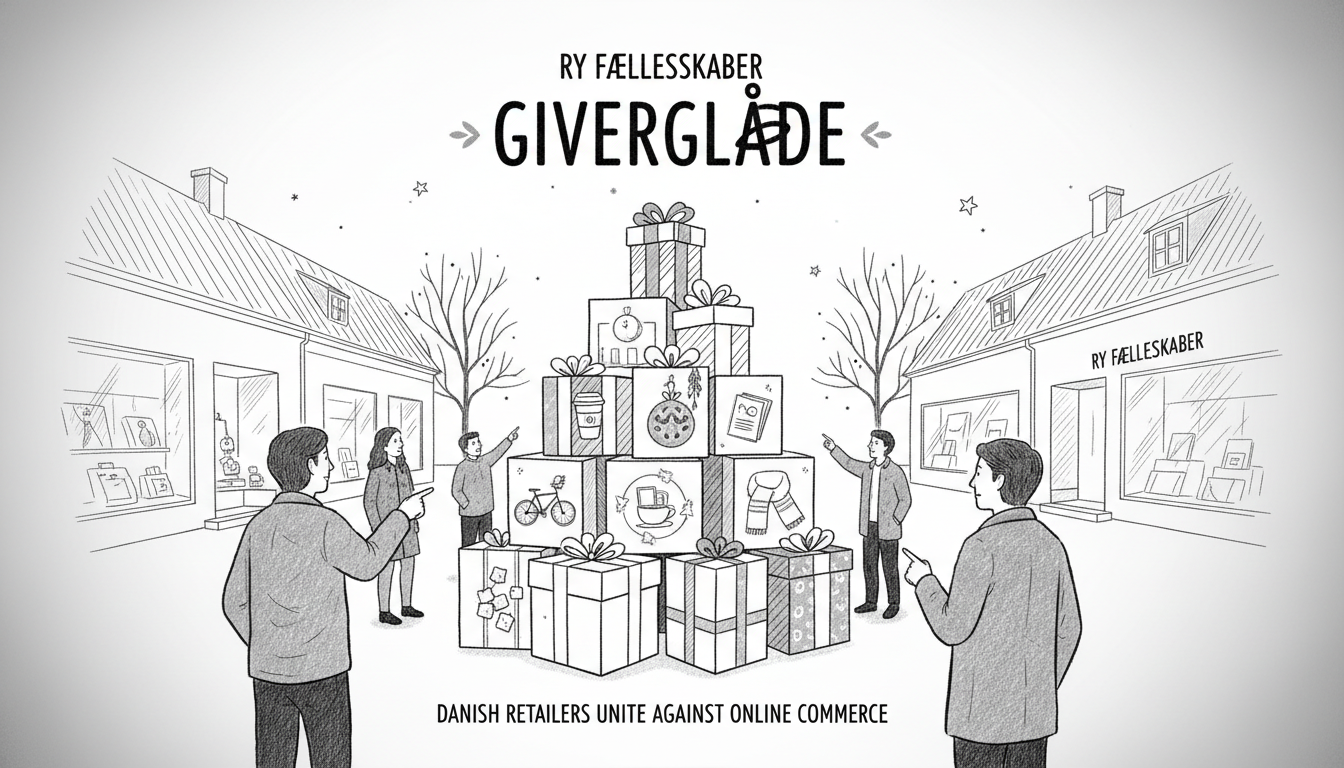Local businesses in the Danish town of Ry are launching a collective counterattack against online shopping trends. Twenty shops have united to create a shared display window showcasing holiday gifts available in their community. This initiative comes as Danish consumers increasingly shift their Christmas shopping online.
Simon Rønlev, head of the local business association Ry+, explained the strategy. He said the display demonstrates the community spirit among local entrepreneurs. The collaborative effort aims to inspire residents to discover gifts within their own neighborhood rather than defaulting to online retailers.
Recent retail data reveals the scale of the challenge facing physical stores. A comprehensive study from Denmark's main business organization shows eight out of ten online consumers plan to purchase their Christmas gifts digitally this season. This trend threatens the survival of traditional retail districts across Denmark.
Rønlev emphasized the critical importance of holiday sales for local economies. He stated that Christmas shopping determines whether community businesses can continue operating throughout the coming year. The survival of local shopping streets depends heavily on this seasonal revenue.
The collective display window uses a simple but effective system. Each item features a number that corresponds to a participating shop. Passersby can consult an accompanying list to identify which local business sells each product. This approach presents merchandise in fresh contexts that might spark new gift ideas.
Local resident Mathias Olin represents the modern consumer dilemma. He purchases most gifts online but acknowledges sometimes buying last-minute items locally. After examining the new display with his wife, Olin expressed surprise at the quality and variety available in area shops.
This retail innovation reflects broader economic pressures affecting Danish commerce. Small and medium enterprises throughout Denmark face similar challenges as consumer habits evolve. The Ry initiative demonstrates how traditional businesses can adapt through cooperation rather than competition.
The timing of this campaign coincides with peak holiday shopping season. Retail experts note that Danish consumers typically complete most Christmas purchases during November and early December. Local businesses hope this visual demonstration of community offerings can capture a meaningful portion of this seasonal spending.
This coordinated approach represents more than just marketing. It signals a strategic shift in how local businesses are responding to digital disruption. Rather than competing individually against global e-commerce platforms, they're leveraging their collective strength as physical community anchors.
The success of this model could influence retail strategies across other Danish towns facing similar challenges. As online shopping continues growing, traditional retailers must find innovative ways to highlight their unique advantages, including immediate product availability and personal service.

